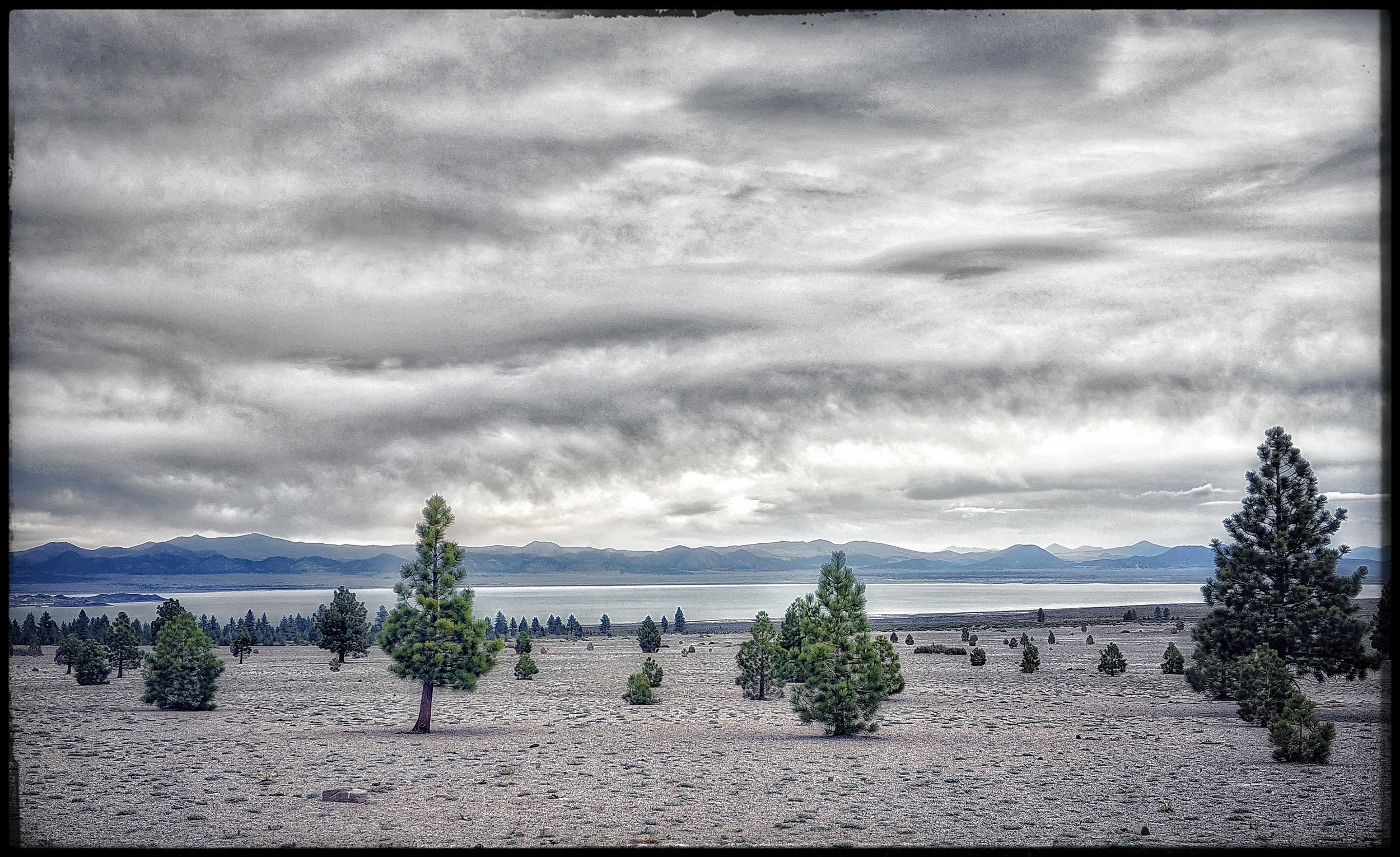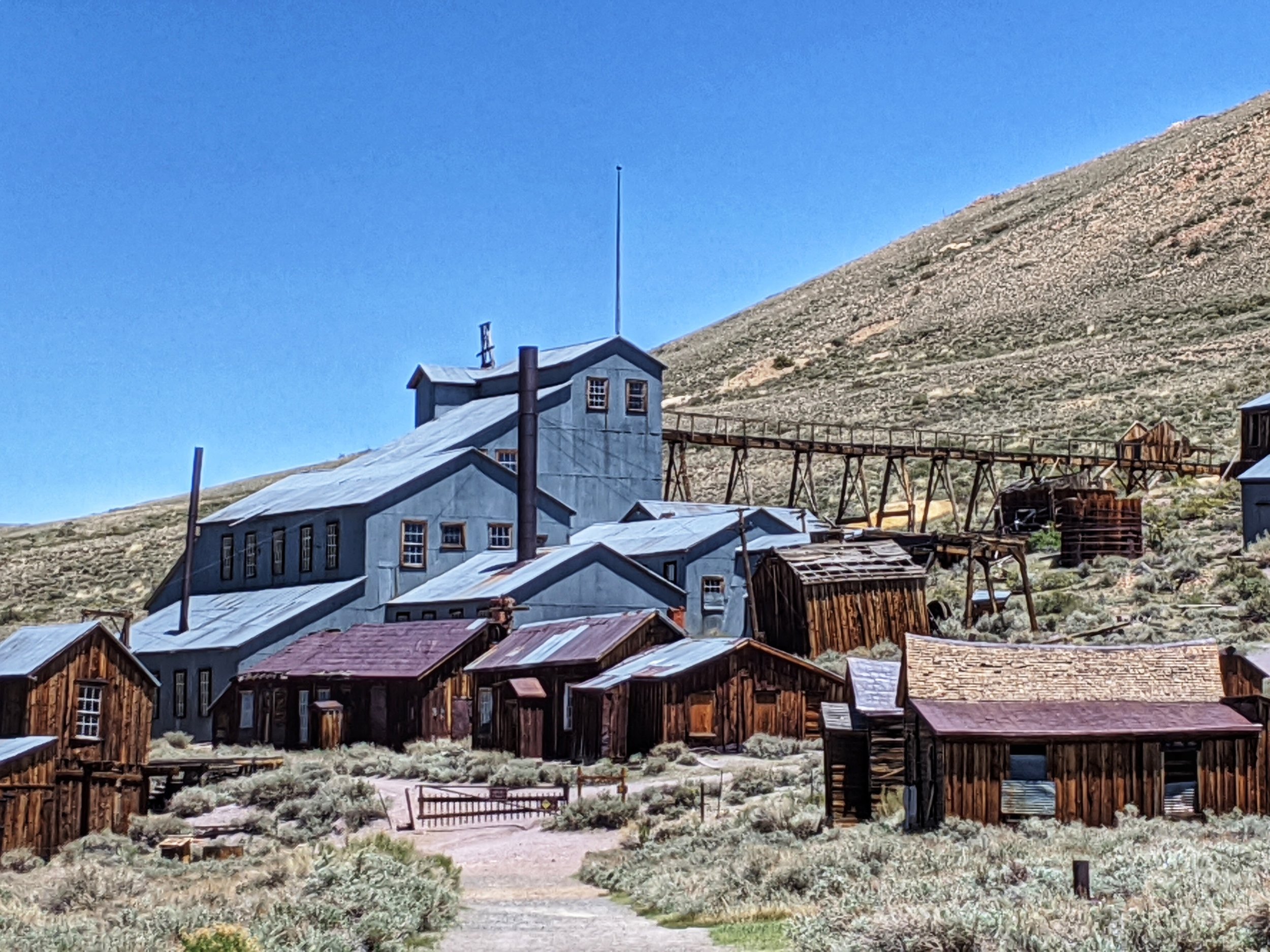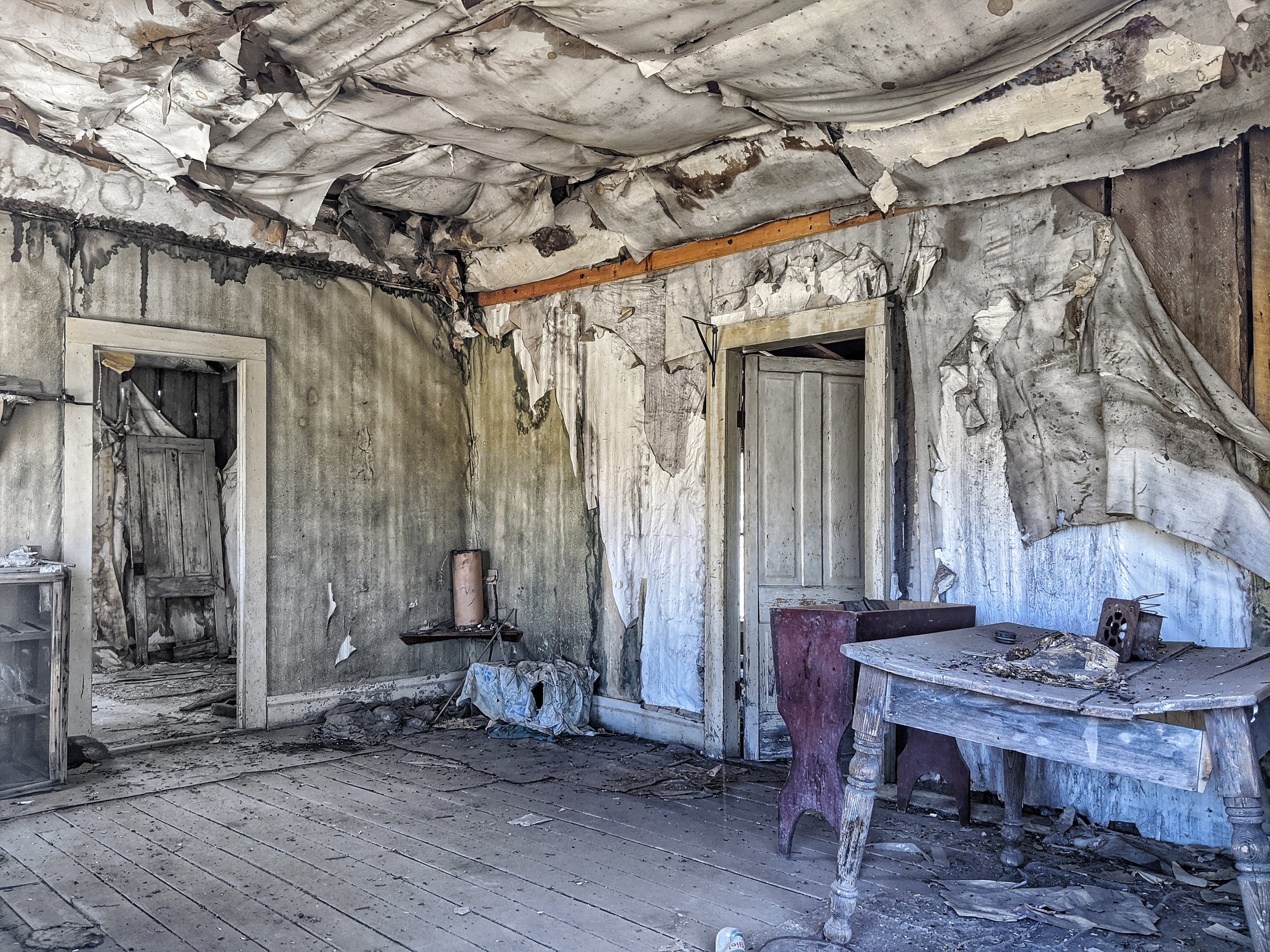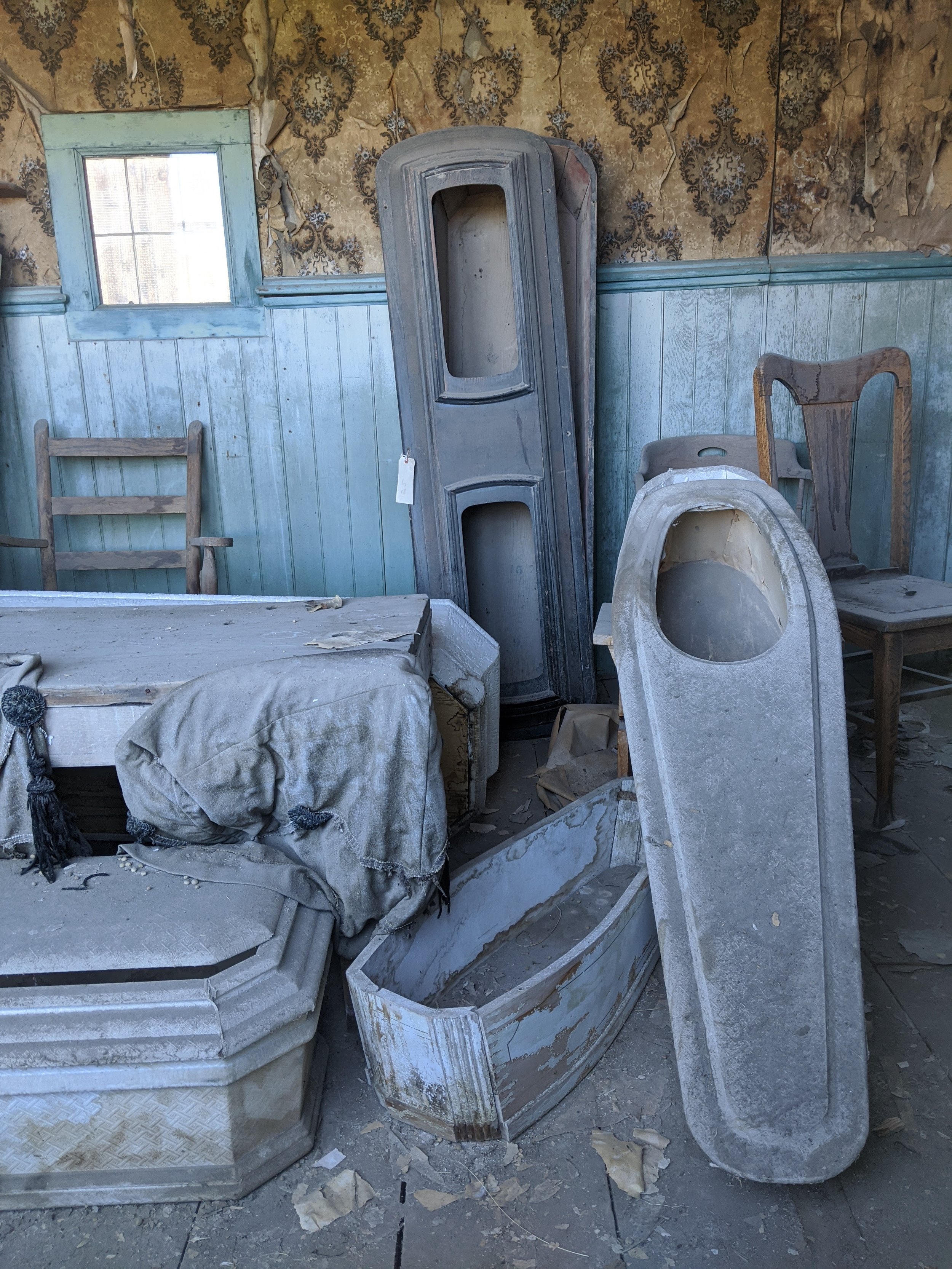
Bodie, California
Bodie is a ghost town I’ve heard about for a long time and have drooled over about possibly visiting due to the impeccable condition of the existing buildings. When the initial restrictions were lifted after the worst of Covid a few years ago, I made a road trip out west to Nevada and parts of California (mostly to visit Mono Lake since it’s featured in a still image from a Pink Floyd advertising blitz from ‘Wish You Were Here).
While walking the shores of that incredibly salty and sublime lake, I came across an informative placard explaining the salinity of the lake and of course, Bodie was mentioned as the place where most of the timber at the lake had disappeared to; I love unplanned side trips!
Bodie was named for William S. Body who discovered gold in early 1859 on a northern bluff (Bodie Bluff) overlooking the basin. William named his mine, The Bunker Hill Mine. He excavated long enough to attract the attention from a few local miners who eventually joined him. But during that first year, there were maybe a dozen miners at most. Unfortunately, later that year, William Body and his partner, Black Taylor became lost in a blizzard while descending to a larger town to gather supplies. Body is located at 8,375’ and is known to have some wild winter weather because it sits in an open and wide basin just east of the Sierra Nevada Mountain Range.
Body became lost during the blizzard and froze to death. Black Taylor made it through the storm safely but the body of William wasn’t found till spring. He didn’t live long enough to see the town named for him thrive.
The real discovery in Bodie didn’t come until a little later and when it did, it was by sheer accident. A partial mine collapse occurred in the summer of 1875 revealing a large gold vein. Naturally enough, word got out and prospective miners started to flock to the area as Bodie became an official, gold-mining Boom Town. A year later in 1876, Standard Corporation bought the mine and a few others around it and developed them further. At its height, Bodie had almost 2,000 buildings and had a population that reached close to 10,000 people. Bodies peak years were between 1877-1881.
The name change from Body to Bodie by the way came about due to a spelling error by a market clerk advertising goods in his store. This was in 1877.
To the left, is the Methodist Church.
To appease all the people, Bodie had several hotels, boarding houses, mercantile, a staggering 65 saloons, three breweries (the Esmeralda & Pioneer breweries were a two of them), a distillery, post office, several daily newspapers, multiple churches, a few blacksmith shops, an opera house, an official brass band, Wells Fargo Bank and a miners/mechanics union. Bodie even had a small “Chinatown” (which included a Taoist temple) area due to the staggering amount of Chinese labor. Since discrimination was rampant against Chinese, they had to find employment elsewhere outside the mines. This was usually in doing laundry. There was even a clandestine Red Light District at the northern reaches of town.
The early days of Bodie, much like other Wild West boom towns was a rough and raucous affair. Shoot-outs in the street, murders and stagecoach robberies were the norm.
A quote by a local pastor, Rev. F.M. Warrington described Bodie as, “A sea of sin, lashed by the tempests of lust and passion.” To a large degree, he was not wrong.
From 1876-1940, it is estimated that roughly $88 million in silver and gold was pulled from the areas 30 mines. Gold was transported from the town’s nine stamp mills down to Carson City or sometimes further west to the mint in San Francisco. Due to the borderline lawlessness of the town, this was always done under armed guard.
Weirdly, despite the debauchery of the town, there was a solid and firm contingent of God-fearing folk. As gold was being discovered in other areas and towns like Butte, Montana, Tombstone and the massive Comstock Lode in Virginia City, many of the miners, often single men, left Bodie. Having the workforce depleted like this, of course, calls into question of those remaining behind, why they stay? The atmosphere of Bodie turned more pious and family-orientated.
However, the mines were still producing high-grade ore. And in 1890 when the cyanide process was established, this gave the ability to extract even more gold from prior tailings. But it wasn’t enough to draw attention & attract people.


Cabins in Bodie

Inside a room

Headframe in Bodie

Inside storefront, mercantile

Mercantile in Bodie

Mortuary at Bodie, California

Saloon....

The old schoolhouse

Inside the old schoolhouse in Bodie

Store front in Bodie

Someone's house
In 1892, a fire ravaged much of the business district giving people an excuse to leave. Mines started to close even as electricity came to Bodie in 1893. Then in 1898, a fire destroyed the main processing mill (even though it was rebuilt a year later).
There was another fire in 1932 that decimated 95% of the buildings in town was started by a 2.5 year-old playing with matches. This effectively put the last nail in the coffin for Bodie.
The last mine in town to close was, The Lucky Boy in 1942. And this was due to Order L-208 by the War Production Board to close all non-essential gold mines.
The ghost town of Bodie today has roughly 5% of its original structures, about 112 buildings. The town is administered by California State Parks and financed/upkeep by a private foundation. The town is in what officials call, ‘Arrested Decay.’ Bodie was officially put on the National Register of Historic Places (Department of the Interior) and became a State Historical Park in 1962 to protect it.
Ghostly Happenings around Bodie…..
Ghost towns are so named because the past dwellings have been abandoned for so long, or there is so little usually left, the only inhabitants are ghosts (metaphorically) and memories (literally). Bodie actually does have some reported activities. The following is straight from the awesome & well-documented website, www.legendsofamerica. It is also referenced below.
“Other ghostly legends have seemingly occurred in this ghost town that is said to truly be a “ghost” town, remaining home to several restless spirits. The J.S. Cain house at the corner of Green and Park streets is said to be haunted by the ghost of a Chinese maid. Families of Park Rangers, who have occupied the house, describe the spirit as not liking adults but loves children.
Adults sleeping in the house have said they will awake in the night to find the “heavy set” Chinese woman sitting on them. Feeling suffocated, one woman fought so hard that she ended up on the floor. Others have reported seeing the bedroom door opening and closing on its own. The Gregory House is also said to be haunted by the ghost of an old woman. Guests and staff have reported seeing her sitting in a rocking chair, knitting an afghan. At other times, the rocking chair has been seen rocking on its own accord.
The Mendocini House is called home to several friendly ghosts. One is thought to be Mrs. Mendocini who loved to cook her Italian food. Rangers report today that they often smell the delicious aroma of her cooking when they enter the house. Others have reported party-like sounds coming from the next room and children’s laughter of children.
At the Dechambeau House, visitors have seen a woman peering from an upstairs window.
At the Bodie Cemetery is “The Angel of Bodie,” a three-year-old child that was said to have been accidentally killed when she was hit in the head by a miner’s pick. Her grave is mounted with a white marble angel and on one occasion a man visiting the cemetery with his little girl noticed that she was giggling and seemingly playing with an unseen entity. Today, Bodie is one of the largest and best-preserved ghost towns in the West. Its over 200 buildings are maintained in a state of what is termed “arrested decay.” Many original items are displayed in these old buildings. When people moved out after the fire of 1932, they packed what they could get in their wagon or truck, and the rest was just left behind. Only about 10% of the original buildings still stand; however what is left looks much the same as it did over 50 years ago when the last residents left.
There are no permanent residents in the town except park employees. In this original ghost town, you will find no tourist traps, restaurants, or recreated saloons. The only business is the Bodie Museum, which is free to the public and offers books, postcards, and other souvenirs.”

